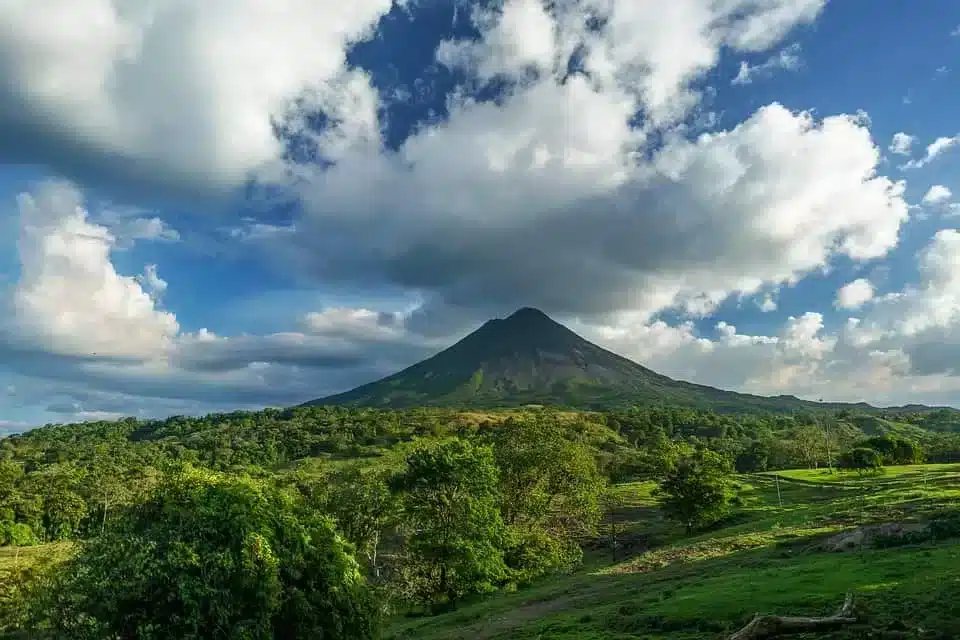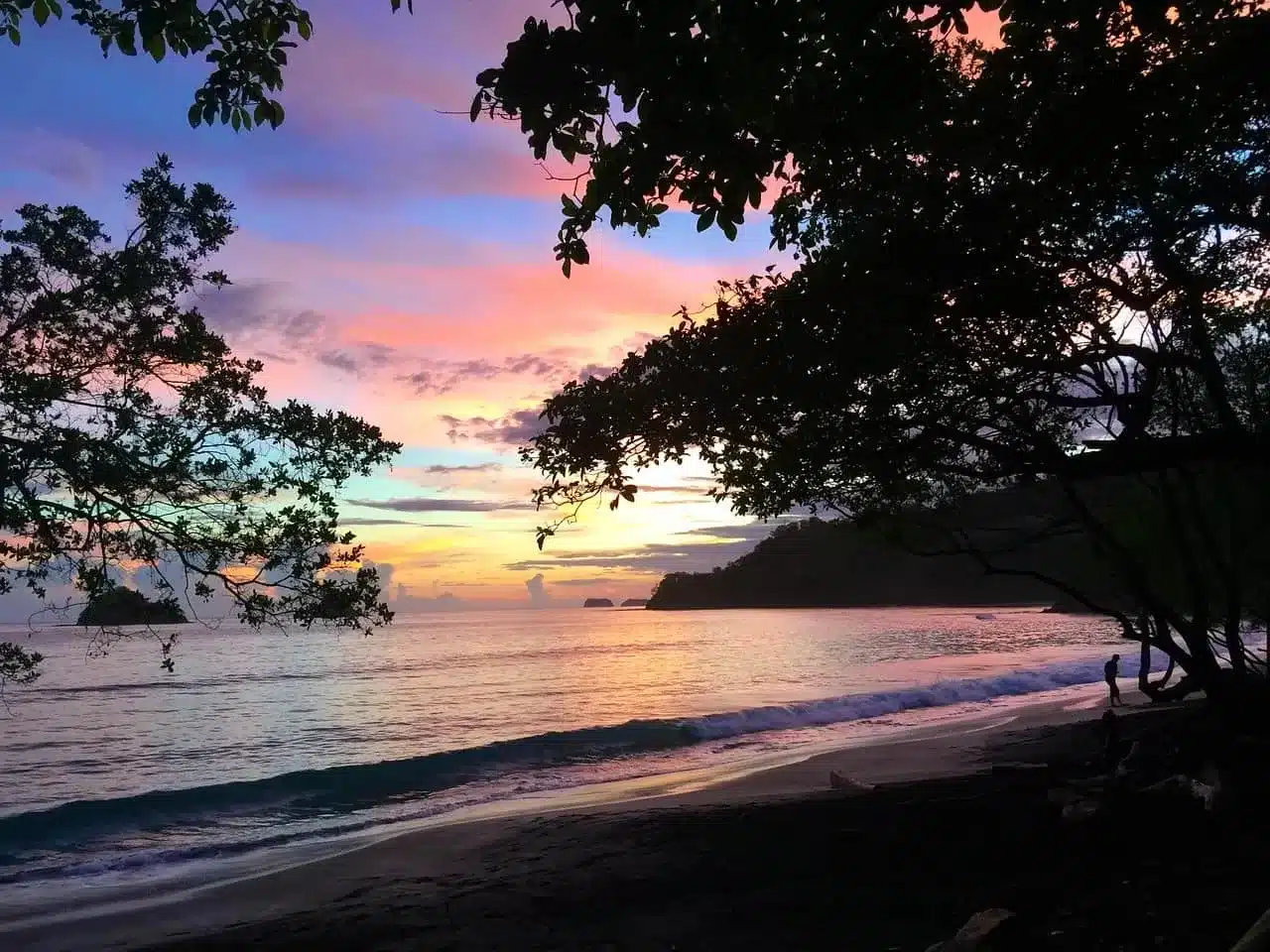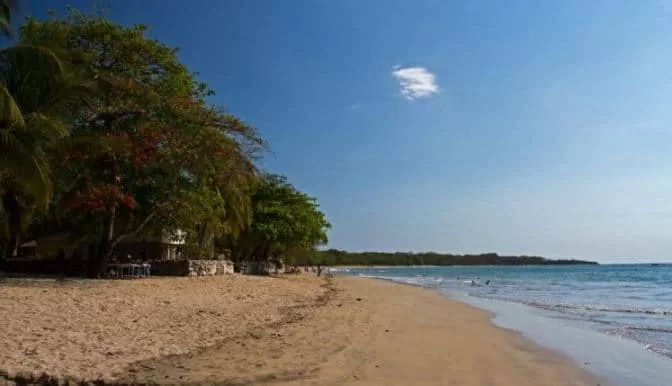Retire in Style: Discover Costa Rica’s Mid-to-High-End Living Options
With its idyllic blend of tranquil beaches, lush rainforests, and vibrant biodiversity, Costa Rica is a magnet for American retirees seeking adventure and serenity in their golden years. This Central American jewel offers a unique juxtaposition of relaxation and exhilaration, making it a top choice for those looking to enrich their retirement experience.
At the heart of Costa Rica’s charm are its varied living options, catering to a broad spectrum of budgets and lifestyles. From the warm sands of Tamarindo Beach to the serene peaks of the Monteverde Cloud Forest, the country presents a range of locales that promise a fulfilling and affordable retirement. Whether one desires a modest abode nestled amidst natural wonders or seeks a more upscale residence with luxurious amenities, Costa Rica’s real estate landscape accommodates every preference.
This article is a guide for potential retirees through the diverse living opportunities Costa Rica offers. Relying on the latest data and insights, we provide a clear and concise overview of the choices available, ensuring that your vision for a dream retirement is not just a possibility but a tangible reality.
Why retire to Costa Rica?
Costa Rica’s unparalleled allure for retirees extends beyond its picturesque landscapes to a harmonious blend of climate, culture, and stability. The country’s consistently warm weather, characterized by a tropical climate that varies from the balmy coasts to cooler highlands, offers an ideal setting for various lifestyles and activities throughout the year. This climatic diversity ensures that Costa Rica can accommodate your preference, whether you prefer sun-soaked beaches or misty mountain retreats.
The nation’s commitment to sustainability is evident in its dedication to preserving its natural splendor. Over a quarter of its land is protected, home to 5% of the world’s biodiversity. This commitment positions Costa Rica as a global leader in environmental conservation, offering residents the chance to live in close harmony with nature. The country’s extensive network of national parks and protected areas provides endless opportunities for exploration and relaxation amidst lush rainforests, dramatic volcanoes, and abundant wildlife.
Socially, Costa Rica is characterized by its stable and peaceful society. It abolished its army in 1949, redirecting those resources towards education, healthcare, and environmental protection. The result is a society that values education, health, and a high quality of life, all appealing factors for retirees. The Costa Rican people, known for their warm and welcoming nature, embrace a ‘Pura Vida’ lifestyle, which encapsulates their approach to peaceful and happy living.
Moreover, Costa Rica’s political stability and progressive policies make it a secure and inviting destination for retirees from around the globe. Its government’s focus on peace, human rights, and sustainable development creates a safe and supportive environment for expats. This blend of natural beauty, climate diversity, commitment to sustainability, and societal stability makes Costa Rica a place to live and a destination to thrive in the golden years.
Real Estate in Costa Rica
Costa Rica’s real estate landscape offers diverse living options, from modest yet comfortable communities to luxurious upscale neighborhoods. To provide a clearer perspective, let’s draw parallels with similar properties in the United States, offering insights into what retirees can expect regarding cost, amenities, and lifestyle.
Moderately Priced Communities
In Costa Rica, moderately priced communities offer comfort and practicality. For instance, a one-bedroom apartment outside of city centers, such as in Jaco or Tamarindo, is available for rent at an average price of $400 to $650 per month (237,413.22₡ to 386,287.00₡), according to Numbeo’s early 2024 data. This is similar to renting in cities like Phoenix, Arizona, or Dallas, Texas, where similar properties are priced at the lower end of the urban real estate market. These Costa Rican communities often feature essential amenities like gated security, communal pools, and proximity to local markets and healthcare, akin to suburban neighborhoods in U.S. cities.
For those interested in purchasing property, a modest home or apartment in these areas can cost between $100,000 and $200,000, offering good value for money, especially considering the natural beauty and cultural richness of the surroundings. In contrast, similar investments in the U.S. could fetch a small condo or an older single-family home in less central locations.
Upscale Neighborhoods
On the higher end, Costa Rica’s upscale neighborhoods in areas like Escazu or Santa Ana provide luxurious living spaces. Here, a one-bedroom apartment in city centers rents approximately $550 to $1,100 per month (324,532.55₡ to 660,000.00₡), reflecting the prices in U.S. cities like Austin, Texas, or Portland, Oregon. These apartments often have high-end amenities, including state-of-the-art fitness centers, elegant social areas, rooftop pools, and expansive views of the city or surrounding natural landscapes.
Purchasing in these neighborhoods can range from $250,000 to over $500,000, depending on the size and exclusivity. This is comparable to buying a well-appointed condo or townhouse in U.S. cities like Denver, Colorado, or Raleigh, North Carolina. These properties typically feature modern designs, luxury finishes, and amenities like 24-hour security, private parks, and clubhouses.
Comparison of Amenities
Choosing between moderately priced and upscale living in Costa Rica often depends on personal preferences for lifestyle and amenities. Moderately priced options provide comfortable living with essential amenities similar to U.S. suburban standards. These might include community swimming pools, security services, convenient access to shops, and local healthcare – analogous to living in a well-developed but affordable American suburb.
In contrast, upscale neighborhoods in Costa Rica offer amenities on par with luxury urban living in the U.S. Think of the high-end districts in cities like Miami or San Diego, where residents enjoy many premium features. These can include advanced security systems, high-quality fitness centers, gourmet dining options, and, often, exclusive access to country clubs or private beaches. The properties are designed with sophistication, boasting spacious layouts, modern architecture, and, often, sustainable building practices.
Costa Rica offers a seamless transition for retirees accustomed to the U.S. lifestyle but seeking a change of scenery without sacrificing comfort. The cost of living, especially in the housing sector, generally leans towards being more budget-friendly in Costa Rica compared to many U.S. cities.
Quality of Life in Costa Rica
Costa Rica’s appeal as a retirement destination is enhanced by its high-quality healthcare, safe environment, and vibrant community life. These aspects contribute significantly to the overall quality of life, making it an ideal place for expatriates seeking a fulfilling and comfortable retirement.
Healthcare: Costa Rica is renowned for its accessible and high-quality healthcare services. The country’s healthcare system is consistently ranked among the best in Latin America. Many doctors and medical practitioners are trained in the U.S. or Europe, ensuring a high level of care and expertise. Healthcare in Costa Rica operates on a two-tier system: the government-run universal healthcare system, known as Caja Costarricense de Seguro Social (CCSS), and the private sector. Expatriates living in Costa Rica can enroll in the CCSS, which is affordable and comprehensive. Additionally, numerous private hospitals and clinics throughout the country offer excellent medical services, often at a fraction of the cost compared to the U.S. This blend of public and private healthcare options ensures that residents have access to affordable and quality medical care.
Understanding Costa Rica Social Security (Caja)
Safety and Security: Costa Rica is known for its stable and peaceful environment. The country abolished its army in 1949, emphasizing its commitment to peace and internal security. It enjoys one of the lowest crime rates in Latin America, making it a haven for expatriates and retirees. While, like any country, petty crime does exist, it is generally considered safe to live and travel within Costa Rica. The government’s focus on education and healthcare has contributed to a stable and content society, further enhancing the country’s safety profile.
Community and Social Life: The social and community life in Costa Rica is one of its most attractive features for expatriates. The country’s warm and welcoming culture makes it easy for newcomers to integrate and form connections. There are numerous expat communities, particularly in popular areas like the Central Valley, the Gold Coast, and around Lake Arenal, where social activities, clubs, and volunteer opportunities abound. Whether it’s through local community events, cultural activities, or outdoor adventures, expatriates find it easy to engage with like-minded individuals and become part of the vibrant social fabric of Costa Rica. The combination of friendly locals and a diverse international community ensures retirees a rich and engaging social life.
Embracing the Culture of Costa Rica
Retirees settling in Costa Rica find themselves in a rich cultural melting pot, with ample opportunities to immerse themselves in the local traditions and lifestyle. This section explores ways for retirees to integrate into the Costa Rican culture and overcome language barriers, enhancing their experience in this vibrant country.
Cultural Integration: Costa Rica’s culture is a colorful mosaic of indigenous origins, Spanish colonial influence, and modern global infusions. Retirees can engage with this culture through various avenues. Participating in local festivals and community events is an excellent way for expats to understand and appreciate the Costa Rican way of life. These festivals often celebrate Costa Rica’s history, religion, and diverse ecology, offering an authentic glimpse into the nation’s heart and soul. Additionally, retirees can explore the country’s rich art scene, including its indigenous crafts and contemporary artworks, which reflect the varied origins of the Costa Rican people.
Moreover, retirees can visit historical landmarks and museums, such as the National Museum in San José or the pre-Columbian gold museum, to delve deeper into the country’s heritage. Engaging in eco-tourism and conservation efforts, like participating in wildlife protection programs or visiting Corcovado National Park, aligns with the national ethos of eco-stewardship, fostering a deeper connection with the environment and local community.
Language and Communication: While Spanish is the official language, Costa Rica is home to various linguistic influences, including indigenous languages and English, especially in tourist areas. For retirees, learning basic Spanish is not just about communication; it’s a bridge to cultural immersion. Many Costa Ricans speak English, but showing effort in learning Spanish is greatly appreciated and opens doors to deeper interactions with locals.
Retirees can enroll in Spanish language classes offered in many communities to overcome the language barrier. Engaging in language exchange with locals or participating in community groups can also be beneficial. The phrase ‘Pura Vida’ – a quintessential Costa Rican saying meaning ‘pure life’ – embodies the local ethos of positivity and appreciation for life, and using it can instantly connect retirees with locals.
Furthermore, understanding and respecting local customs and social norms is crucial. Costa Ricans are known for their polite and friendly demeanor, and retirees who reciprocate this attitude will find it easier to integrate and form meaningful relationships.
Practical Considerations when Retiring to Costa Rica
For retirees contemplating a move to Costa Rica, understanding the practical aspects of daily life, including the cost of living and accessibility, is crucial. This section briefly compares living costs between Costa Rica and the USA.
Cost of Living: The cost of living in Costa Rica is significantly lower than in many parts of the USA. According to data from Numbeo, the overall cost of living in Costa Rica is approximately 23% to 30% lower than in the United States.
For instance, the cost of groceries, dining out, and general consumer goods is lower in Costa Rica, allowing retirees to maintain a comfortable lifestyle on a more modest budget. In Costa Rica, a meal at an inexpensive restaurant in Costa Rica costs around 5,000₡ (about $8), while a three-course meal for two at a mid-range restaurant is about 30,000₡ (roughly $48).
In contrast, similar dining experiences in the USA would cost significantly more. Daily essentials like groceries are also more affordable in Costa Rica. A gallon of milk costs about 3,639.06₡ ($5.8), and a loaf of fresh bread is priced at around 1,172.53₡ ($1.87). These prices reflect a lower cost of necessities, making day-to-day living more affordable for retirees.
In addition, transportation costs in Costa Rica are also lower. A one-way local transport ticket is around 500₡ ($0.8), and a regular monthly pass costs about 20,800₡ ($33).
However, it’s important to note that certain expenses, mainly imported goods and vehicles, can be higher in Costa Rica due to import taxes. Despite these variances, the overall cost savings in Costa Rica, combined with a high quality of life, present an attractive proposition for U.S. retirees.
Should you retire to Costa Rica?
Costa Rica is an exemplary retirement destination with its harmonious blend of natural beauty, affordable living, and high quality of life. The nation’s vibrant culture and stable, peaceful environment offer a serene yet engaging backdrop for those looking to enrich their golden years.
From the lush rainforests and pristine beaches to the warm, welcoming communities, Costa Rica presents diverse experiences catering to various interests and lifestyles. Compared to the United States, the lower cost of living allows retirees to enjoy a comfortable lifestyle while optimizing their retirement budgets. The country’s commitment to sustainability and healthcare ensures a life amidst unspoiled nature with access to excellent medical care.
For retirees seeking a destination that balances relaxation with adventure, community with solitude, and affordability with quality, Costa Rica is a compelling choice. Its inclusive environment welcomes retirees from all levels of society, offering a rich mix of experiences and opportunities. As a country that embodies the essence of ‘Pura Vida,’ Costa Rica invites potential retirees to consider it not just as a place to live but as a place to thrive in their retirement years.









